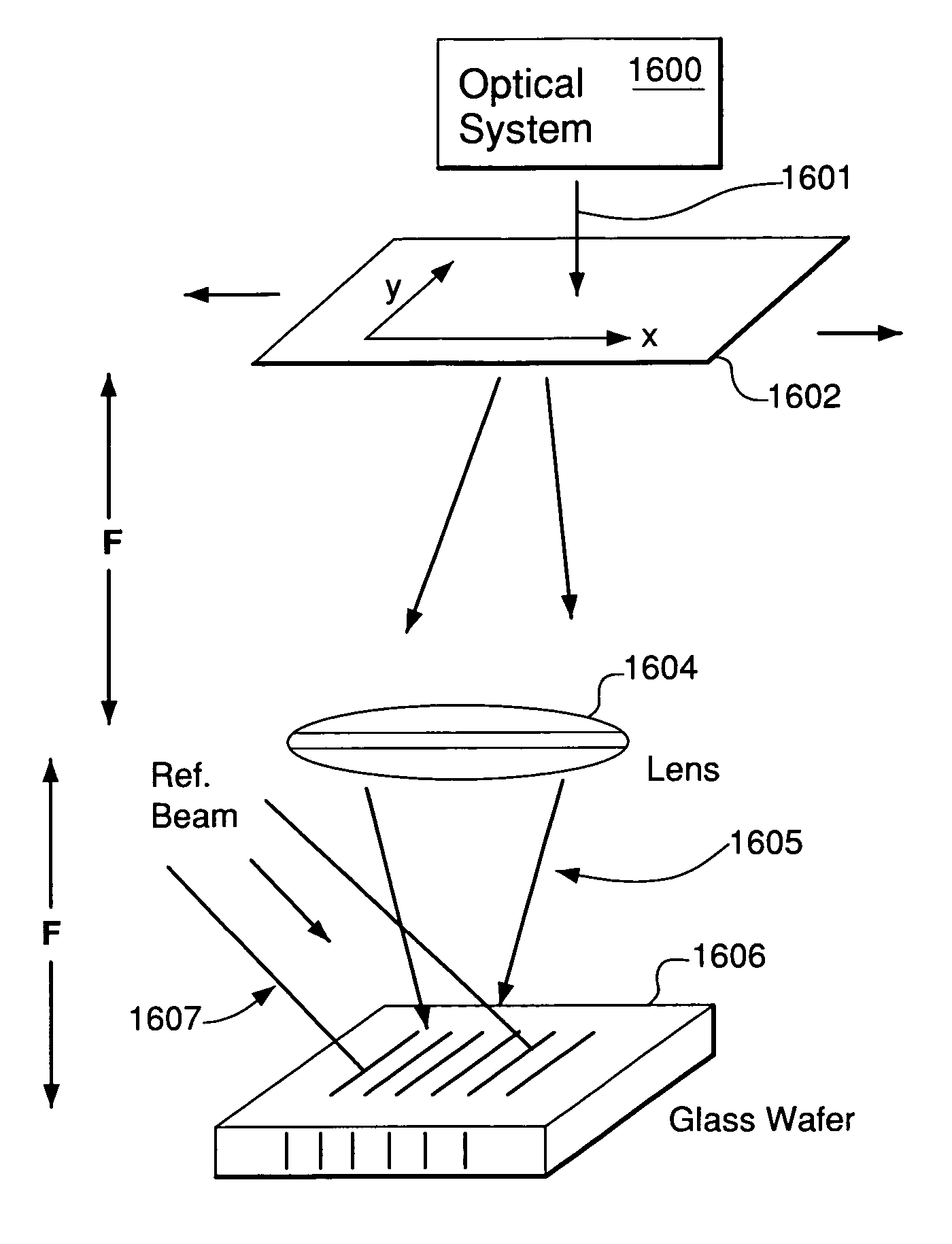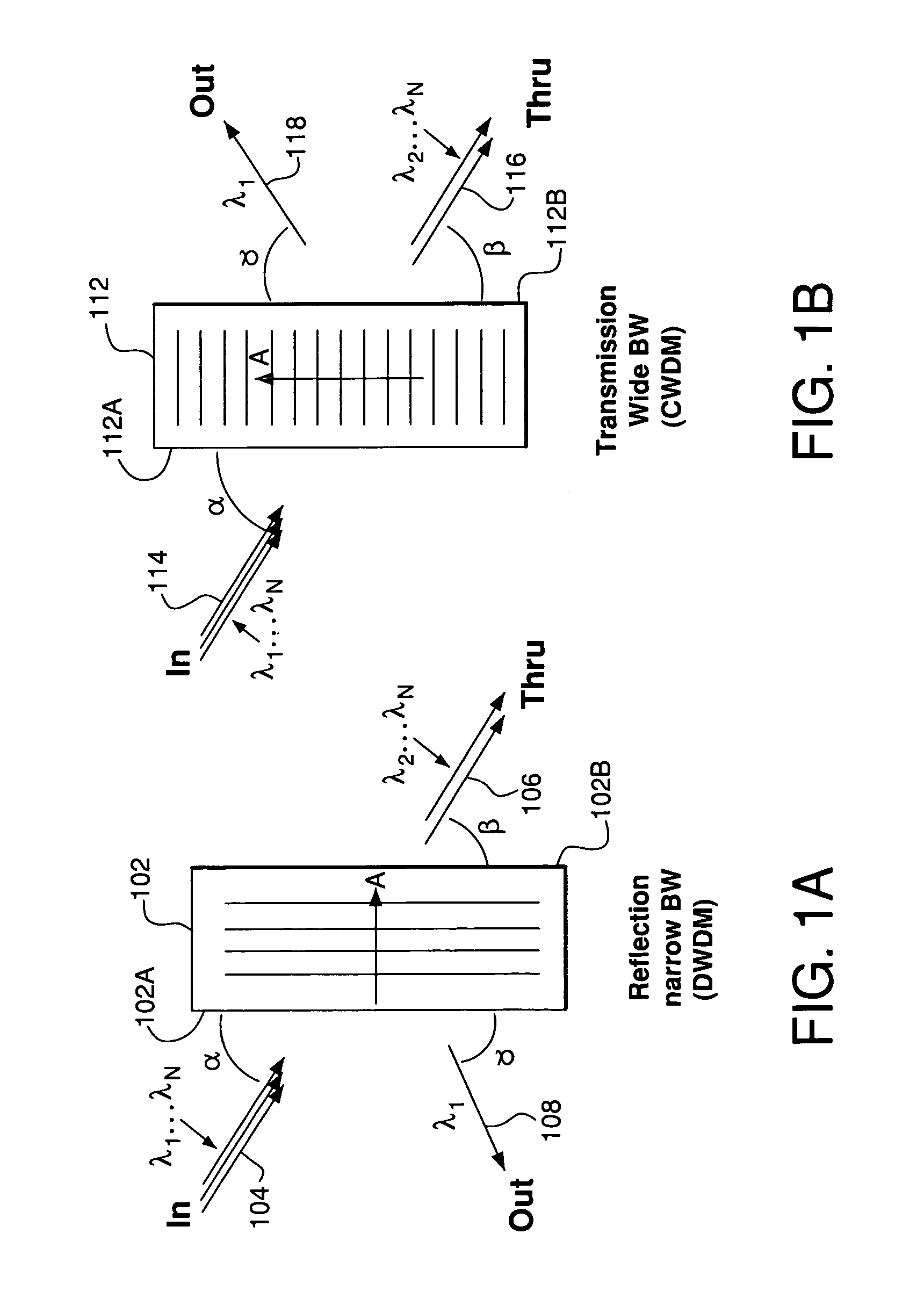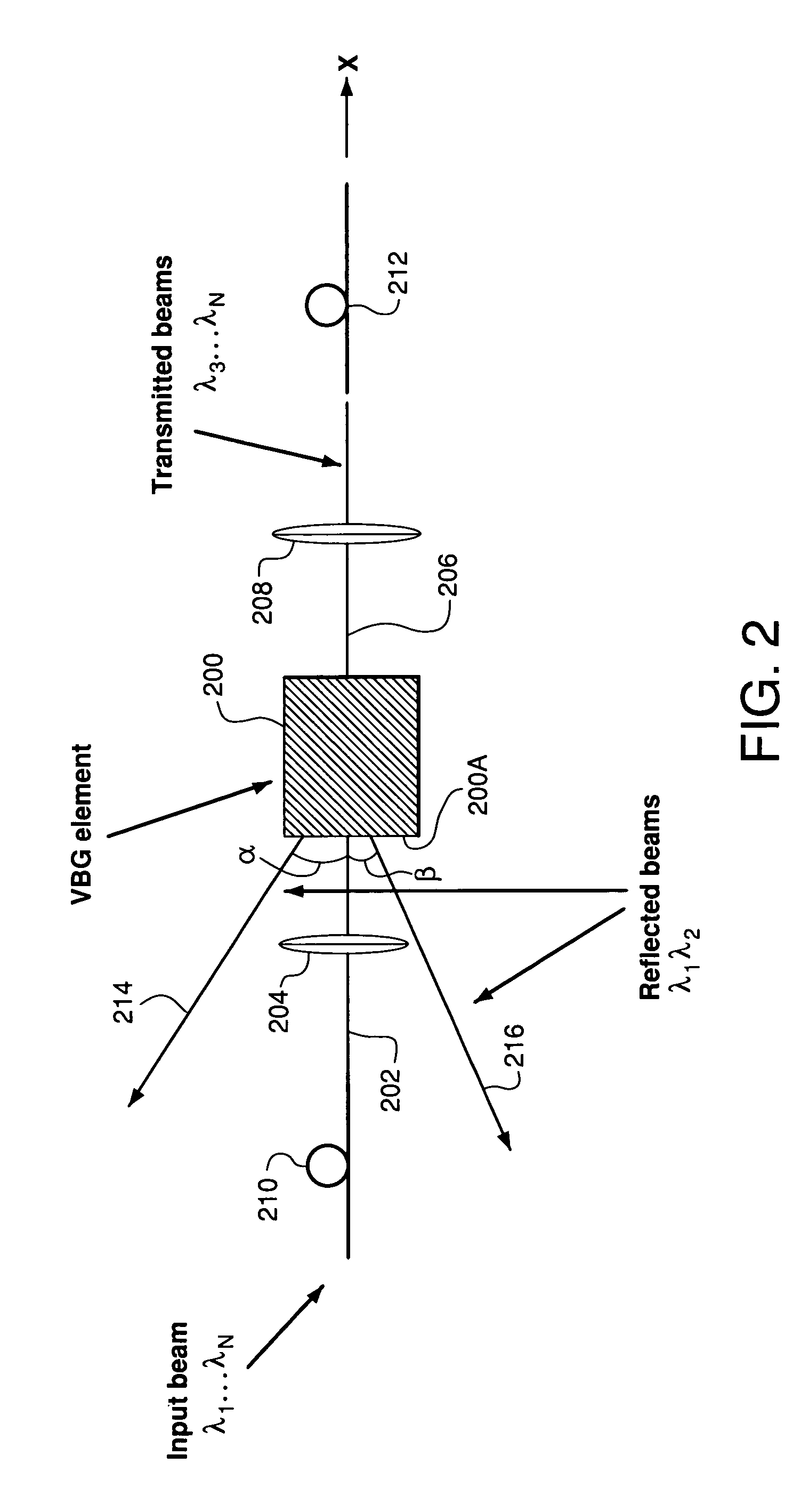Fiber optic devices having volume Bragg grating elements
a fiber optic device and volume bragging technology, applied in the field of fiber optic devices, can solve the problems of limited use of filters, inability to recognize wavelengths of light with the intention of achieving practical device functionality, and inability to record such filters
- Summary
- Abstract
- Description
- Claims
- Application Information
AI Technical Summary
Problems solved by technology
Method used
Image
Examples
Embodiment Construction
[0032]Using Sensitized Silica Glasses for Manufacturing of VBG Filters
[0033]One of the major problems in developing and using any kind of permanent VBG filters for practical applications has been the unavailability of a material or a class of materials possessing physical properties that are adequate for the practical applications. For example, the photorefractive electro-optic crystals, in which much of the research was conducted on the subject of VBGs, among other problems, are incapable of providing truly permanent, stable recording across a wide temperature range. Furthermore, these crystals are strongly anisotropic, which limits their usage substantially. For these reasons, an entire range of applications of VBG filters in general has not been substantially explored. In fact, to the inventors' knowledge, there is not a single photonic device now in the market that uses VBG elements.
[0034]According to the invention, a previously unexplored class of materials, the silicate photor...
PUM
 Login to View More
Login to View More Abstract
Description
Claims
Application Information
 Login to View More
Login to View More - R&D
- Intellectual Property
- Life Sciences
- Materials
- Tech Scout
- Unparalleled Data Quality
- Higher Quality Content
- 60% Fewer Hallucinations
Browse by: Latest US Patents, China's latest patents, Technical Efficacy Thesaurus, Application Domain, Technology Topic, Popular Technical Reports.
© 2025 PatSnap. All rights reserved.Legal|Privacy policy|Modern Slavery Act Transparency Statement|Sitemap|About US| Contact US: help@patsnap.com



